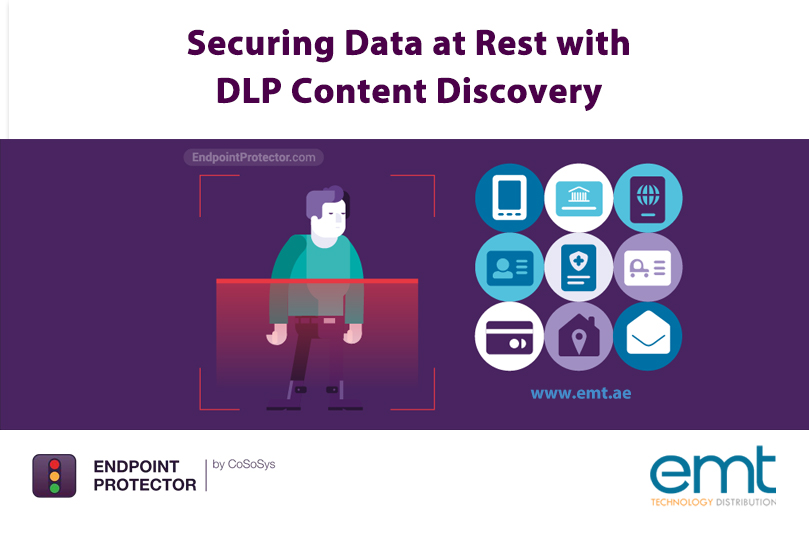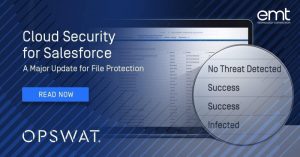With digitalization efforts ramping up over the course of the last decade, most companies nowadays collect and use data on a daily basis. Ranging from sensitive information of employees and customers such as Personally Identifiable Information (PII) to confidential files and intellectual property, they are all now stored digitally. And while businesses have invested heavily in data protection due to compliance constraints and the rise of external threats, these strategies often fail because of a lack of understanding of where data is stored and how it is being used.
Sensitive data should be kept in protected servers, document management systems, and databases, but often winds up in email attachments or stored on employees’ computers. This happens because employees need to use sensitive data to complete their tasks, but frequently forget to dispose of it once they no longer need it. This means that sensitive data accumulates unknowingly on endpoints and can easily be copied or stolen by anyone with access to the computer. Even worse, in the case of remote work, when devices leave the security of company networks, that data becomes exposed to the risk of external attacks both via unprotected internet connections and physical theft of computers.
Storing sensitive data in unprotected locations can lead to noncompliance with data protection regulations and standards such as PCI-DSS, the EU’s General Data Protection Regulation (GDPR), or the California Consumer Privacy Act (CCPA). Noncompliance does not only result in heavy fines and reputational damage but can also have even more dire consequences such as being blacklisted by banks or being denied the right to bid for contracts.
When data is stored in unprotected locations, organizations are creating opportunities for malicious outsiders to steal sensitive information and for neglectful insiders to cause a data breach. To mitigate the risk of such occurrences, it is paramount for companies to be able to discover exactly where all their sensitive information is located and how employees are using it.
How DLP Content Discovery Works
Data Loss Prevention (DLP) solutions have become an essential part of all data protection strategies and one of the reasons for it is their content discovery capabilities. Using policies that allow companies to define sensitive information in the context of their own business, DLP tools scan for, identify, monitor, and control sensitive data at rest and in motion. Solutions such as Endpoint Protector take it a step further and, through tools such as its PII Scanner, offer organizations the possibility to search over a hundred file types for known PII such as credit card numbers, social security numbers, passport, and national ID numbers and more.
However, DLP content discovery does not only refer to PIIs but can also help companies protect intellectual property such as patents and source code and other sector-specific sensitive data such as financial or health records. Customizable policies mean that organizations can define and finetune the details of the data they need to protect.
The Advantages of DLP Content Discovery
Discovering where sensitive data is located is the first step towards more effective data protection strategies. Companies can identify patterns in employee behavior that lead to the storage of sensitive data on computers and then build best practices and targeted training to educate them.
DLP solutions are not only discovery tools, but also offer organizations the possibility to control sensitive data where it is found. This means that administrators can take remediation actions and delete or encrypt sensitive data when it is found in unprotected locations. This can be done automatically from the DLP dashboard across the entire company network.
DLP content discovery can also be useful in case of compliance auditing. When PCI auditors, for example, discover unprotected data, they must then verify that companies have taken action to remove or secure that data which leads to additional billable hours. To cut down auditing costs, organizations can perform content discovery scans and generate reports that prove they are securing sensitive data and then submit them to auditors, reducing the time needed for the auditing process.
In conclusion
DLP content discovery addresses a blind spot in data protection strategies: the information employees work with and save on their computers. While this data may be protected when transferred over the internet, when it is simply stored on an endpoint, it is vulnerable to both outsider and insider threats. DLP content discovery helps companies to mitigate the risks of data at rest through powerful scanning tools and to save money by supporting compliance efforts and reducing the costs of training and auditing by improving their efficiency.
Source : https://www.endpointprotector.com/blog/securing-data-at-rest-with-dlp-content-discovery/








